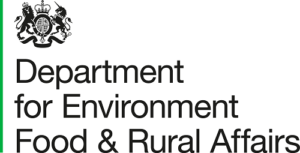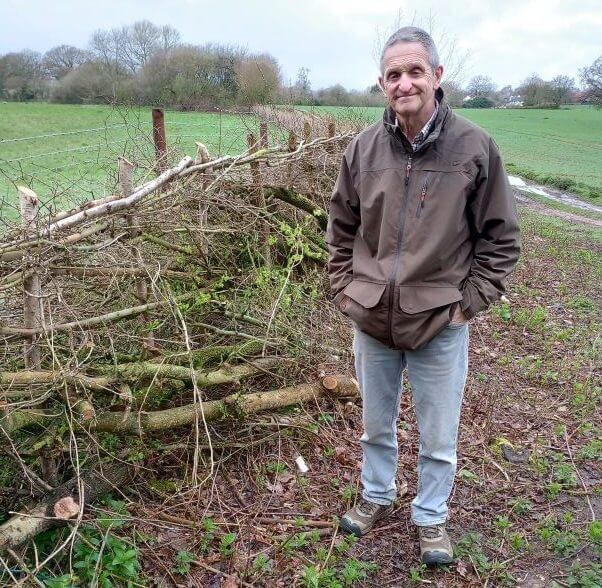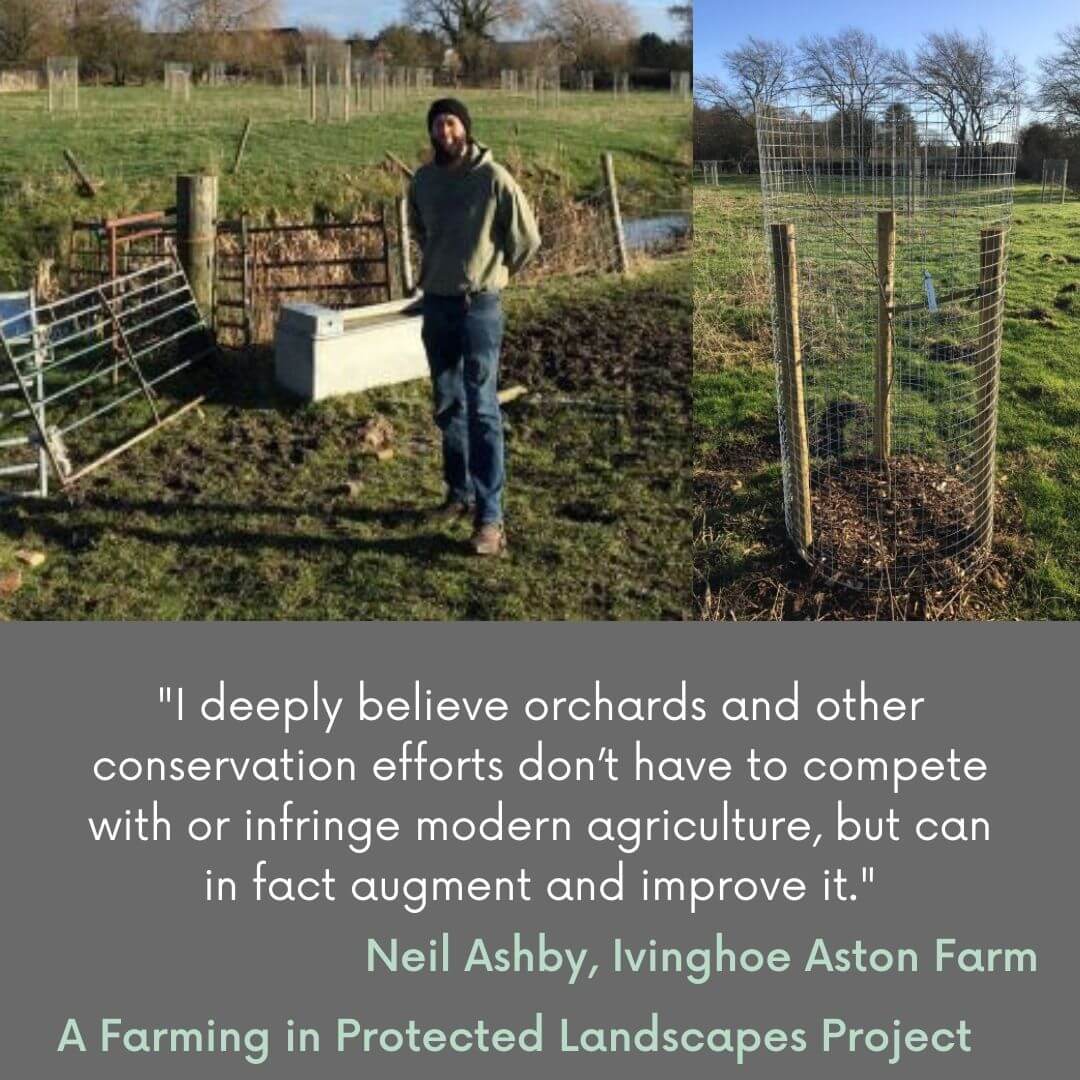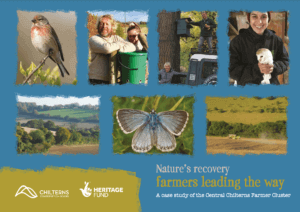
Farming in Protected Landscapes
Protected Landscapes – our National Parks and National Landscapes – are special and unique places. They are living, working landscapes that also support a huge range of habitats and species, and they are enjoyed by millions of people every year.
By supporting the farmers, land managers and people who live and work in these areas, we can help protect these exceptional places and support local communities.
This page was last updated on 13 August, 2024 with the approved projects list.
 Defra introduced the Farming in Protected Landscapes programme, which was originally planned to run from July 2021 to March 2024 but which has now been extended to run for another year (finishing March 2025).
Defra introduced the Farming in Protected Landscapes programme, which was originally planned to run from July 2021 to March 2024 but which has now been extended to run for another year (finishing March 2025).
The programme helps farmers and land managers to carry out projects that support nature’s recovery, mitigate the impacts of climate change, provide opportunities for people to discover, enjoy and understand the landscape and cultural heritage, or support nature-friendly, sustainable farm businesses. This is a programme of funding for one-off projects covering these areas of work, not an agri-environment scheme.
The programme is part of Defra’s Agricultural Transition Plan. It has been developed by Defra with the support of a group of National Landscape and National Park staff from across the country. The Chilterns National Landscape manages the programme for the Chilterns.
Watch the video
<

Chilterns project examples: 2023/24
Since the programme started in 2021, we’ve allocated £1.35 million to 100 projects in the Chilterns National Landscape. Projects vary and we’ve worked with a host of landowners.
Here are some of the projects that received a FiPL grant in 2023-24.
Previous project examples
Year 2: 2022/23

From a community plant nursery to mob grazing, find out more about some of the projects that received funding in 2022-23.
FiPL Case Studies 2022/23Year 1: 2021/22
Click the links below to read  more about the 2021/22 projects:
more about the 2021/22 projects:
- The Central Chilterns Farmer Cluster hedgerow project: eight farms worked together to make impressive achievements in landscape scale habitat creation.
- Ivinghoe Aston traditional orchard: the planting of 350 new fruit trees to increase biodiversity and sequester carbon.
- Enabling growth for Countryways CIC: more people with learning difficulties and health challenges have benefitted from contact with farming.
Eligibility
The Farming in Protected Landscapes programme is open to all farmers and land managers (including from the private, public and charity sector) in a National Park or National Landscape – or where activity on the ground can bring benefit to one or more of those areas.
You must manage all the land included in the application and have control of all the activities you’d like to undertake, or you must have written consent from all parties who have this management and control.
Other organisations and individuals can apply, as long as they do this in collaboration with a farmer or land manager, or in support of a farmer or group of farmers.
Common land is eligible for support through the programme. You can apply as a landowner with sole rights, or as a group of commoners acting together.
The programme supports activity on any land within the Chilterns National Landscape. It can also support activity on other land where projects can demonstrate benefit to the Chilterns National Landscape, or its objectives or partnership initiatives. Most of the funding will probably be provided to projects within the National Landscape boundary.
You can see the boundary by visiting the MAGIC mapping website. Click on ‘designations’, ‘land-based designations’, ‘statutory’ and then ‘Areas of Outstanding Natural Beauty England’
What will the programme pay for?
The Farming in Protected Landscapes programme will pay for projects that, in the opinion of the Local Assessment Panel (see ‘How will my application be assessed’ below), provide value for money and meet at least one of the outcomes listed below. Please note, your project idea only needs to meet criteria for one of the themes, not all four.
Your project must also help to deliver at least one of the Strategic Objectives of the Chilterns National Landscape Management Plan.
| Climate outcomes | Nature outcomes | People outcomes | Place outcomes |
| More carbon is stored and/or sequestered | There is a greater area of habitat improved for biodiversity | There are more opportunities for people to explore, enjoy and understand the landscape | The quality and character of the landscape is reinforced or enhanced |
| Flood risk is reduced | There is an increase in biodiversity | There are more opportunities for more diverse audiences to explore, enjoy and understand the landscape | Historic structures and features are conserved, enhanced or interpreted more effectively |
| Farmers, land managers and the public better understand what different habitats and land uses can store carbon and reduce carbon emissions | There is greater connectivity between habitats | There is greater public engagement in land management, such as through volunteering | There is an increase in farm business resilience. |
| The landscape is more resilient to climate change | Existing habitat is better managed | Farmers and land managers feel increasingly comfortable with providing public goods |
How does it all work?
Payment rates
If an applicant will not make a commercial gain through a project, they could receive up to 100% of the costs.
Where an applicant would benefit commercially from a project, they could receive between 40% and 80% of the costs through the programme, depending on how much commercial benefit the project will give them.
The programme will work alongside – not in competition with – Defra’s existing and new schemes, adding value where it is most needed. If a potential project can be rewarded through those schemes instead, you will be made aware of them.
If an activity is equivalent to one under Countryside Stewardship (CS), the programme payment rate will be the same as the CS rate. If not, we will base programme funding offers on the projected costs of an activity (with final payments made against evidenced costs).
Maintenance agreements
Capital infrastructure assets (including, but not limited to, fences, gates, building restoration), should be maintained for five years from the date of completion.
Machinery assets (for example a brush harvester for grassland restoration) should be maintained for five years from the date of purchase.
The requirement to maintain natural, cultural and access activities (for example, management of grassland, restoration of a historic feature) delivered as part of programme will cease no later than 1 April 2024.
How to apply
Before applying, we would encourage you to read the guidance for applicants and to contact us to discuss your ideas and potential application.
If you would like to proceed, please complete an application form. We are now considering applications for funding in Year 4 (ending March 2025). Applications can include spending in both years. All projects must end by March 2025.
Your project must also help to deliver at least one of the Strategic Objectives of the Chilterns National Landscape Management Plan.
How will my application be assessed?
- Applications for over £10,000 will be judged by a Local Assessment Panel.
- The Local Assessment Panel will be made up of eight to 12 people. It will include representatives from the Chilterns National Landscape, Natural England, representatives from the farming and land management community, and land management and ecology specialists.
- We expect that the panel will meet to make decisions every six to eight weeks.
- Applications for less than £10,000 will be decided upon by a senior member of the National Landscape team (who has no prior knowledge of the project).
Successful applications
If approved, a brief summary of your project will be published here on the Chilterns National Landscape website (as required by Defra) in order to share information on how funding is being used. The list showcases the impressive variety of projects being delivered in the Chilterns through the Farming in Protected Landscapes programme and represents a significant amount of hard work and commitment on the part of the applicants.
Download the approved projectsApplication materials
 Read the guidance for applicants
Read the guidance for applicants
 Download the application form
Download the application form
 Download project costs table (to accompany application)
Download project costs table (to accompany application)
 Download Not Registered for VAT Form
Download Not Registered for VAT Form
Need more information?
 If you have a question about the Farming in Protected Landscapes programme, please complete the enquiry form, email farming@chilterns.org.uk or call 01844 445018.
If you have a question about the Farming in Protected Landscapes programme, please complete the enquiry form, email farming@chilterns.org.uk or call 01844 445018.
For ideas on working collaboratively at landscape scale read about the highly successful farmer-led cluster approach adopted in the Central Chilterns. We are keen to use the fund to support similar approaches elsewhere in the National Landscape.
Related news
Red kites: avoiding conflict in our gardens
We're working with Natural England, British Trust for Ornithology (BTO) and local wildlife groups to bring together further guidelines to lessen harmful interactions.
A Christmas message from our Chief Executive
As 2024 comes to an end, Chilterns Chief Executive Dr Elaine King reflects on achievements from the past year.
New public right of way opens in Bledlow
The previously private area of Thickthorne Wood is now open to the public.







